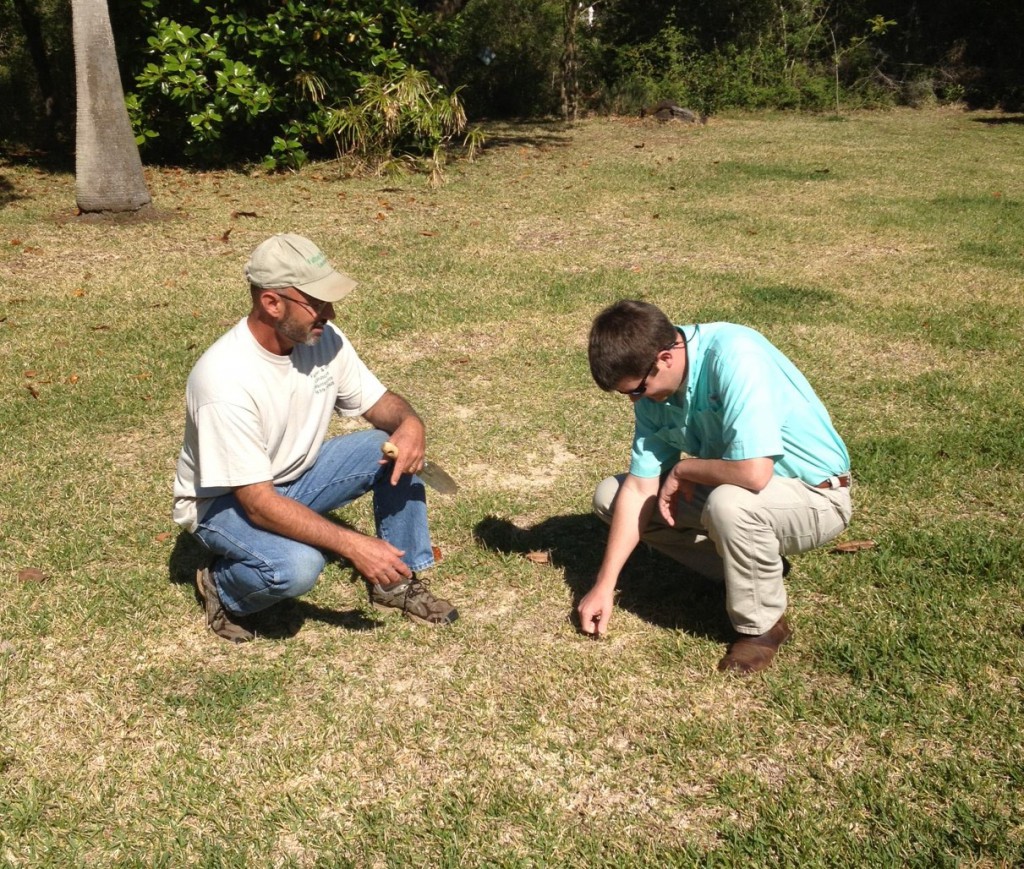
UF/IFAS Extension working with horticulture professionals scouting turf issues. Photo Credit: Blake Thaxton
Using an Integrated Pest Management (IPM) approach to landscape management has been an integral part of the green industry for many years. The strategies help to make pest control more efficient by incorporating multiple methods and being flexible enough to make changes where needed.
One of the most critical steps in your IPM plan is monitoring and correct pest identification. If the pest is not identified correctly, then any steps taken to control that pest will be ineffective and may also mask the original problem making it harder to get a correct diagnosis.
Correct identification does not stop at naming the pest in question. More research needs to be done to choose the appropriate management methods. Some key questions to answer are:
• What are the primary hosts in this landscape?
• How can we manage the landscape to make the pest less successful?
• What is the life cycle of the pest?
• How/where does it reproduce?
• At which stage of the life cycle are we likely to get the best control?
• Are there different strategies based on life cycle stage?
Answering these questions will help you choose appropriate control methods whether cultural, mechanical, biological, or chemical. Remember to always keep good records and modify your plan as needed.
For more information visit https://edis.ifas.ufl.edu/topic_pest_management
Latest posts by Julie McConnell (see all)
- Changes to Florida Pesticide Applicator Exam Testing Sites and Florida Statute Affecting Pesticide Applicators - July 22, 2024
- UF/IFAS Gulf Coast Turfgrass Expo & Field Day Set for June 16, 2021 - June 7, 2021
- COVID-19 Update April 2, 2020: What Does the Office of the Governor Executive Order 20-91 Mean for Landscape Companies? - April 2, 2020